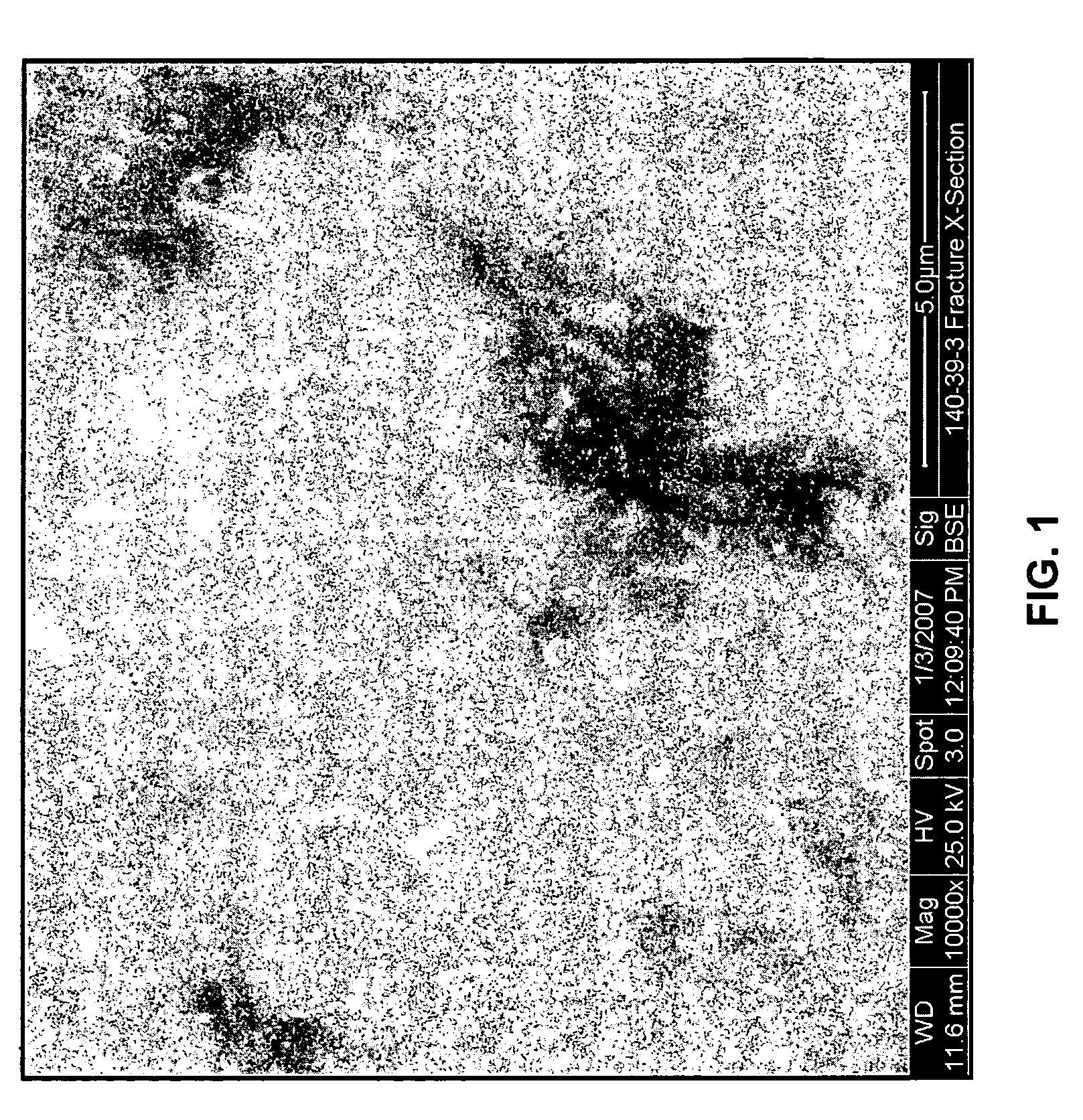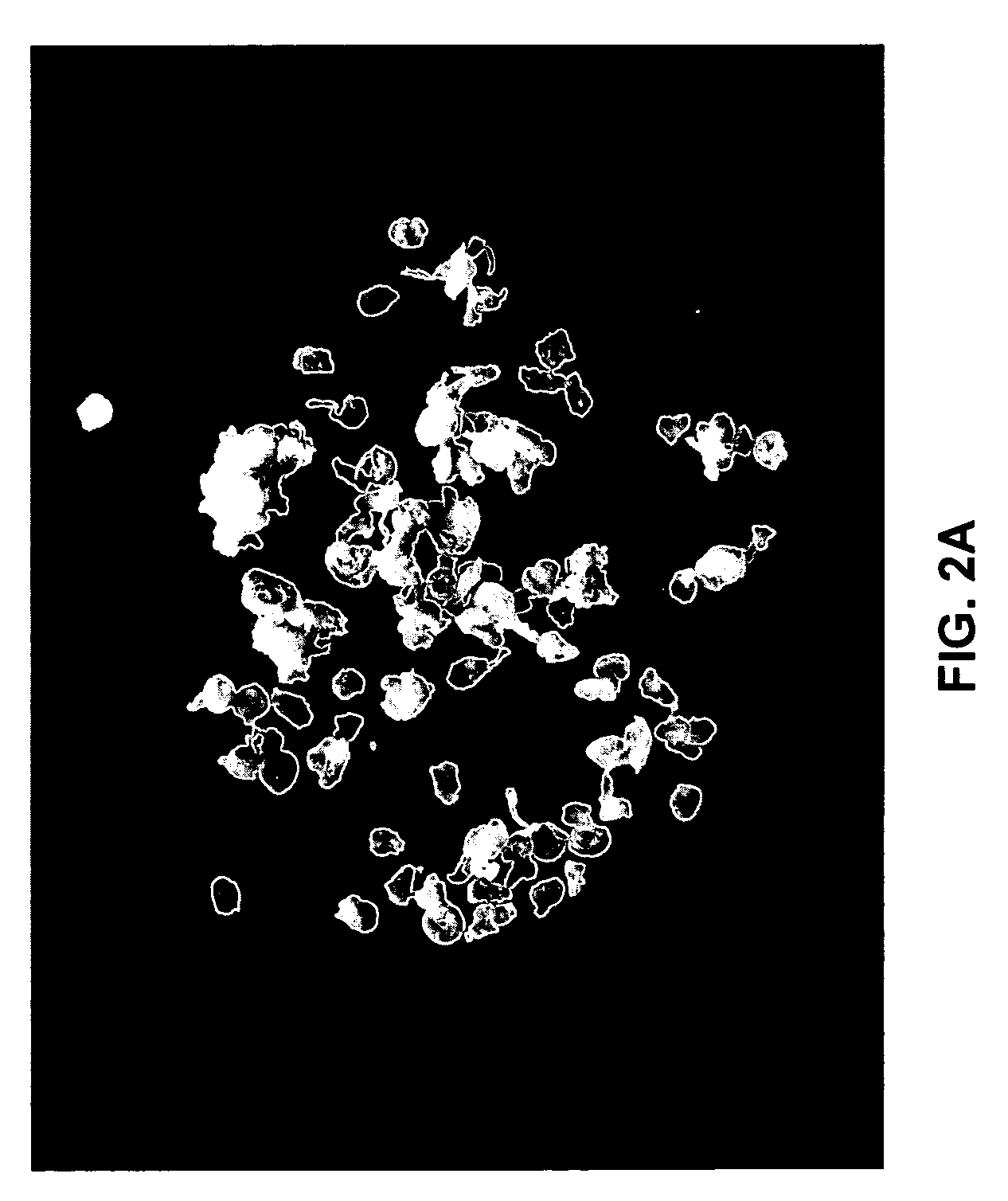Nanocomposite method of manufacture
a nano-composite and composite technology, applied in the field of new polymeric composites, can solve the problems of reducing the operational cost of using composites, compromising mechanical properties, and limiting the amount of fillers which can be incorporated, so as to achieve the effect of improving or equivalence mechanical performan
- Summary
- Abstract
- Description
- Claims
- Application Information
AI Technical Summary
Benefits of technology
Problems solved by technology
Method used
Image
Examples
example 1
[0031]To make a nylon nanocomposite:
[0032]1. A commercial grade of Nylon-6 resin named Ultramid® B3K is obtained from BASF and dried at 85° C. under vacuum for 16 hours. In addition, Halloysite MP-SM1 material obtained from Imerys New Zealand China Clays is also placed in a vacuum oven at 110° C. for 16 hours.
[0033]2. The dry Nylon-6 resin is fed at a controlled rate to a Werner and Pfleiderer ZSK-30 twin screw extruder operating at a 44:1 L / D ratio. The setup of this extruder is seen in FIG. 4, where the various zones are depicted and where KB illustrates kneading blocks interspersed within the screw extruder that intermixes the halloysite and the polymer. Temperatures in each of the extruder segments do not exceed 260° C. except for the die that is set to about 275° C. (dependent upon the polymer material being used).
[0034]3. A metered amount of Halloysite MP-SM1 is added to the extrusion process so as to result in a masterbatch of about 30% Halloysite by weight.
[0035]4. The molte...
example 2
[0039]An alternative method for making a nanocomposite masterbatch is as follows (Yield approx. 26.25 g):
[0040]1. In a 2 liter beaker or glass reaction vessel, heat 500 ml mixed xylenes (e.g., mono or mixed isomers) with mild vortex stirring to about 115° C.
[0041]2. Dissolve 25 grams polypropylene (PP), such as Exxon-Mobil PP1024E4, into xylene, maintaining temperature and stirring, keeping boiling to a minimum. Depending on the size of PP particles (beads, powder, etc.), the time to complete dissolution varies from minutes to hours. Maintain approximate volume of solution by adding xylene as needed, or by refluxing.
[0042]3. Suspend and / or dissolve 0.39 g of benzalkonium chloride (BAC) in 25 ml xylene in a glass vial. Utilize either a horn sonicator or an ultrasonic bath for this purpose while maintaining constant room temperature.
[0043]4. Add 1.25 g of dried halloysite (Premium EG, NancoClay and Technologies, air milled and dried at 110° C.) to the 25 ml xylene / BAC mixture and puls...
example 3
Comparative—Melt Compounded
[0051]To make a nylon nanocomposite using melt compounding:
[0052]1. A commercial grade of Nylon-6 resin named Ultramid® B3K is obtained from BASF and dried at 85° C. under vacuum for 16 hours. In addition, Halloysite MP-SM1 material obtained from Imerys New Zealand China Clays is also placed in a vacuum oven at 110° C. for 16 hours.
[0053]2. The dry Nylon-6 resin is fed at a controlled rate to a Werner and Pfleiderer ZSK-30 twin screw extruder operating at a 44:1 L / D ratio. The setup of this extruder is seen in FIG. 4. Temperatures in each of the extruder segments do not exceed 260° C. except for the die that is set to 275° C.
[0054]3. A metered amount of Halloysite MP-SM1 is added to the extrusion process so as to result in a compound of about 7.5% Halloysite by weight.
[0055]4. Subsequently, the compound may be molded in an injection molder to form a nanocomposite material via standard nylon-6 molding temperatures, pressures, and times.
[0056]Test Results: A...
PUM
| Property | Measurement | Unit |
|---|---|---|
| diameter | aaaaa | aaaaa |
| mechanical strength | aaaaa | aaaaa |
| elongation | aaaaa | aaaaa |
Abstract
Description
Claims
Application Information
 Login to View More
Login to View More - R&D
- Intellectual Property
- Life Sciences
- Materials
- Tech Scout
- Unparalleled Data Quality
- Higher Quality Content
- 60% Fewer Hallucinations
Browse by: Latest US Patents, China's latest patents, Technical Efficacy Thesaurus, Application Domain, Technology Topic, Popular Technical Reports.
© 2025 PatSnap. All rights reserved.Legal|Privacy policy|Modern Slavery Act Transparency Statement|Sitemap|About US| Contact US: help@patsnap.com



